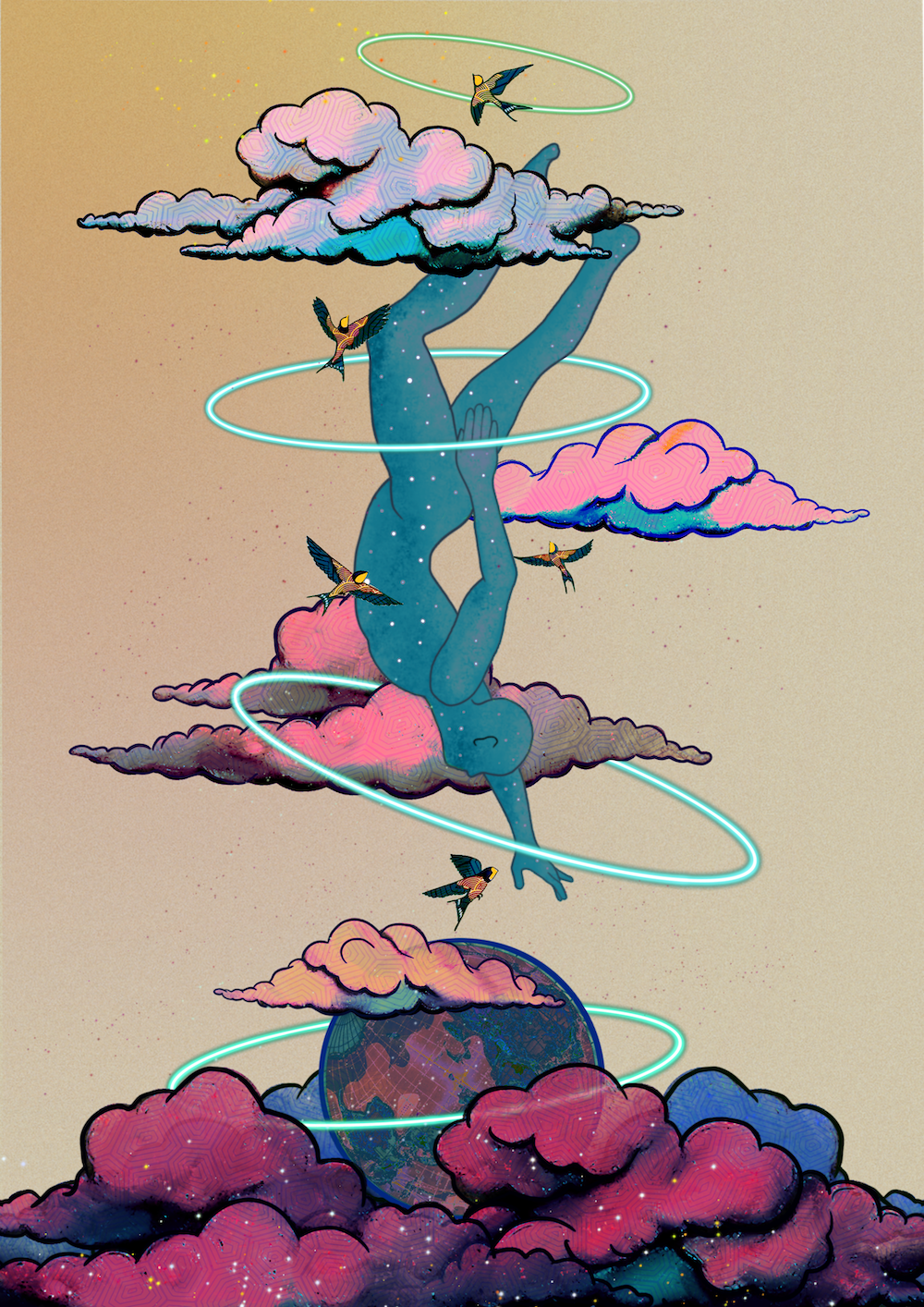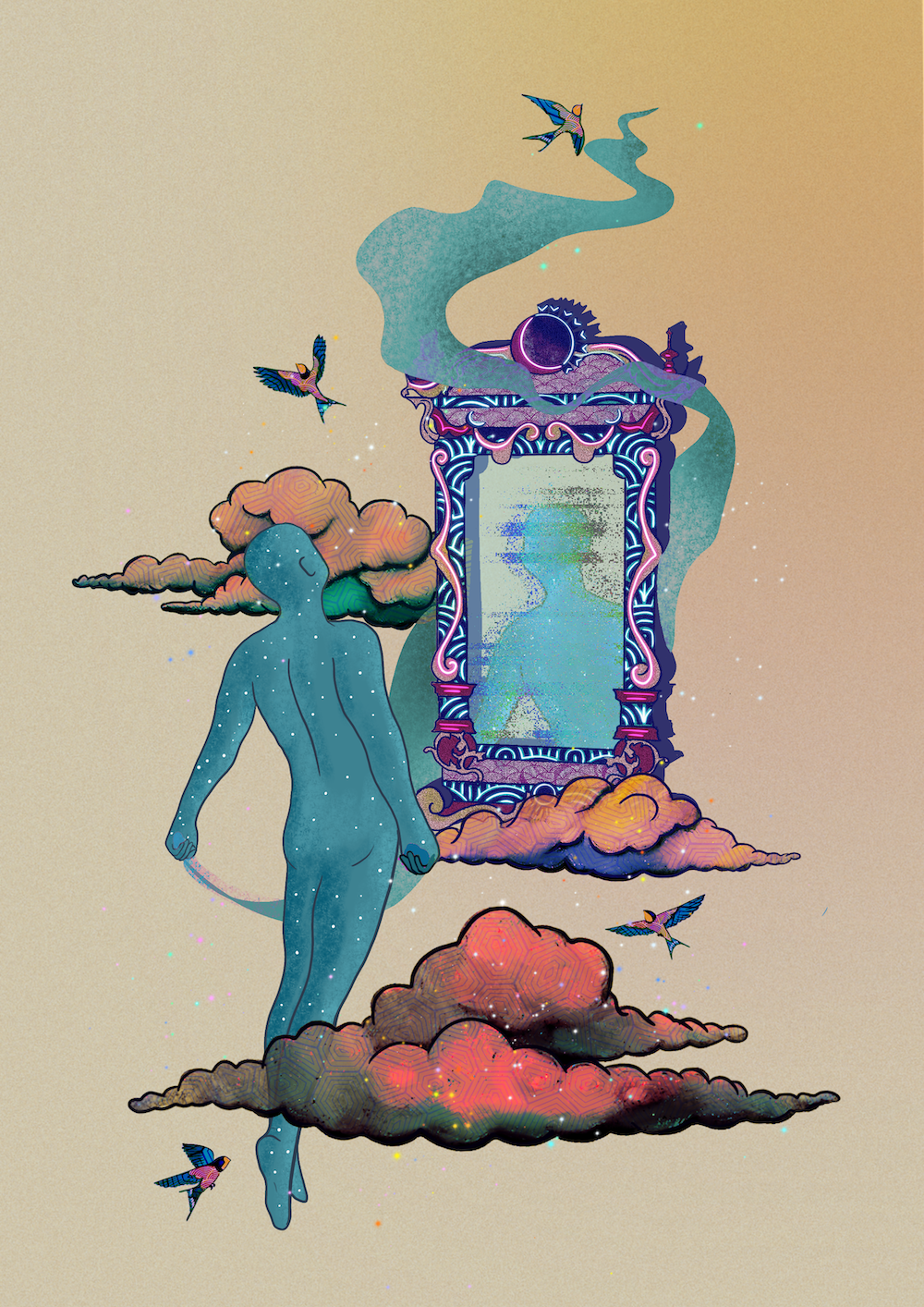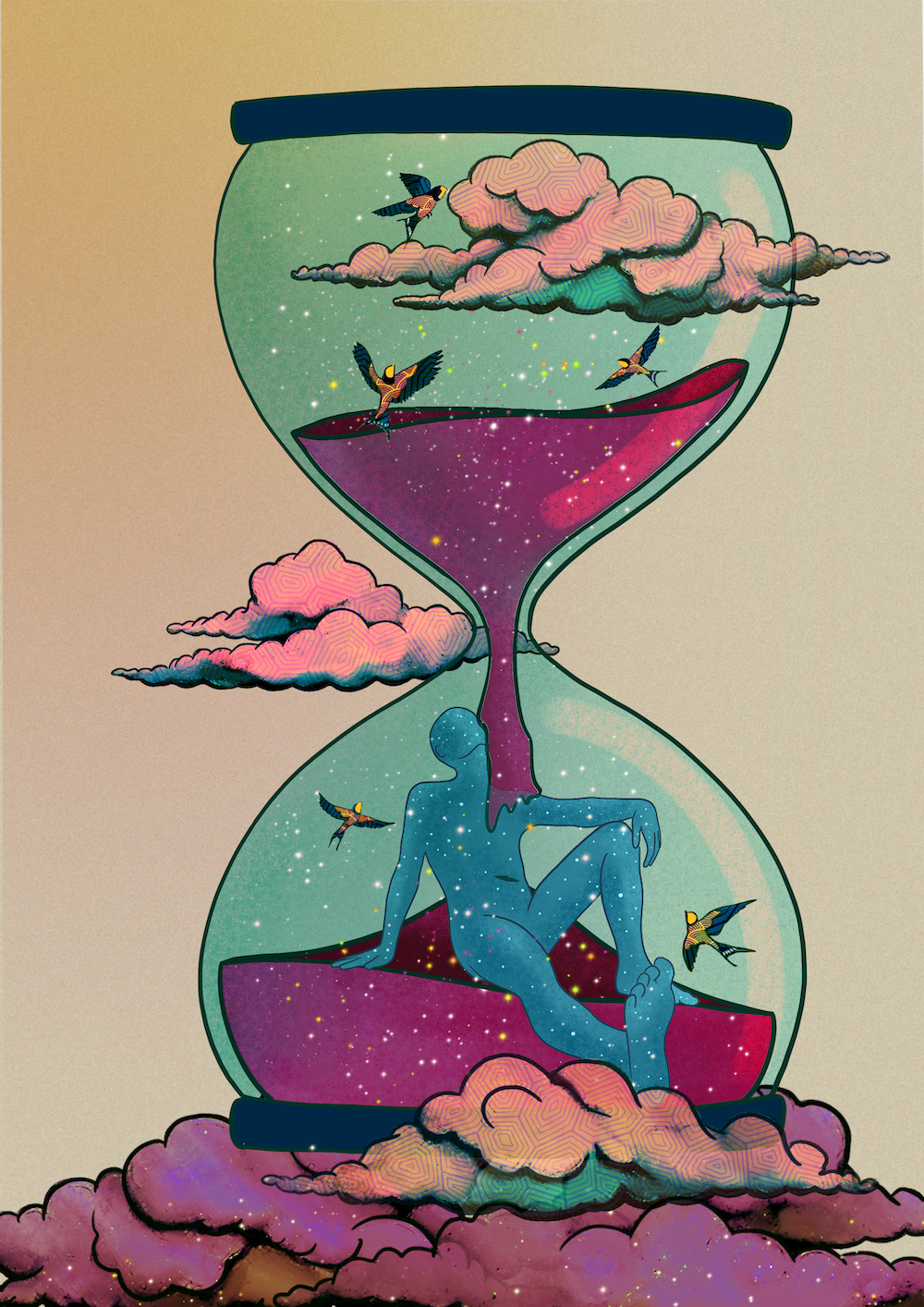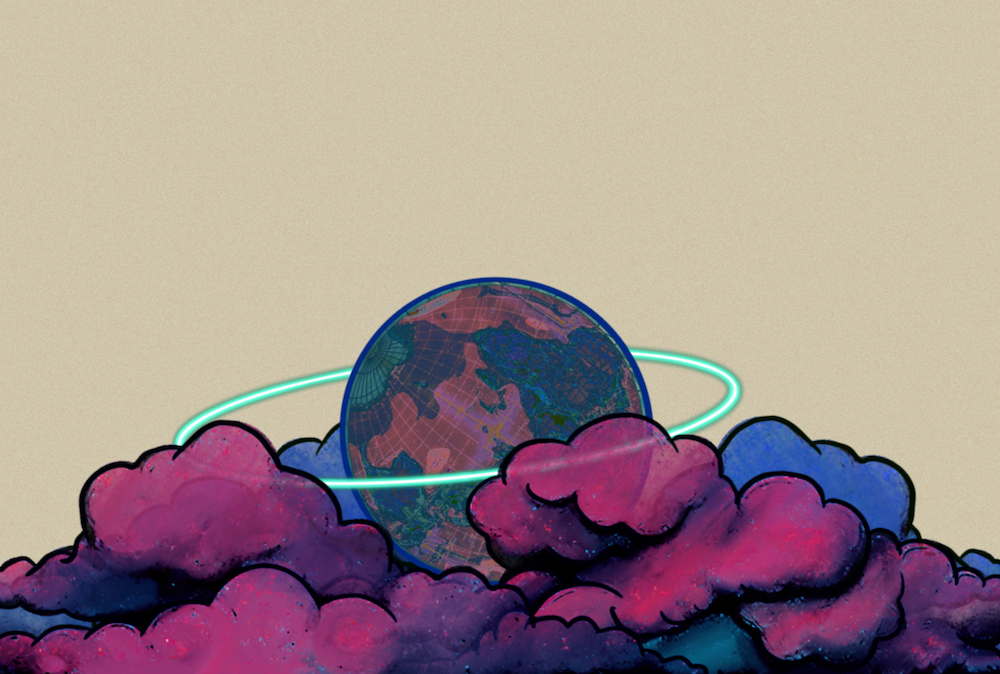By Bodhi Chattopadhyay
Bodhisattva Chattopadhyay is Associate Professor in Global Culture Studies at the University of Oslo, Norway. He leads the international research group CoFUTURES. Chattopadhyay is the leader (PI) of two major research projects funded by the European and Norwegian Research Councils, which explore contemporary global futurisms movements from a transmedial perspective, including literature, film, visual arts, and games.
Part 1: Displacement
Some never arrived. Some came bruised. And some buried both.
It isn’t that displacement isn’t the norm. Our lives are a continual process of moving and temporary home making. The early 20th century philosopher Jorge Santayana speculated that travel, the ability to move, was the key to intelligence.[1] But the apparent romance of his speculation had a dark undertone – that the movement was ultimately about survival. In distinguishing between plants and animals, including humans, Santayana made a simple argument for how plants were “rooted” and thus unable to move even when their local conditions became too harsh for survival, but animals could. While we have progressed further in scientific understanding of botanical life and see plant movement differently, the darker undertone remains instituted, that “survival” necessitates movement, and in conditions of extreme violence necessitates displacement, irrespective of its consequences on evolution or intelligence.
You went to sleep in one country, but without moving, without the land itself shaking itself loose and ejecting you, you still woke up in a foreign one. While you slept lines were drawn, oddly crooked, like a child trying to make a straight line without a ruler ending up with a squiggly line. You happened to fall on a side that was your own but in which you were asked to belong anew, to show your allegiance yet again, such that where you thought you belonged is now a foreign country. Years later, you still carry with you the papers that claim ancestry, ever unsure of who you really were, a stranger in a land that was yours to which you didn’t belong, or a stranger in a land that you belonged to but which wasn’t yours.
Nevertheless, Santayana was on to something, having lived much of his life as an émigré and exile between worlds and having to face head on the historical reality of two world wars. And that is the reality that displacement is the norm, and will continually be so in a world like ours unless we can rethink the world itself differently. And that while there may be positive examples of ingenuity born of the necessity to continually uproot oneself and find one’s place in an ever desiccated world, the rhetoric of “resilience” elides the deeper structural problems of forced displacement by coating it in a sheen of managerial competence.
My grandparents were refugees of their own land. They were Indians when India split, and they escaped genocide to find their way in a new India that still carried the name, while their ancestral places became a new country. They never discussed these histories with their grandson, perhaps because it was too soon, and perhaps it was a reality they felt nobody should have to know or face. But in India, folks like them still carry a label that describes their affiliation to the old world, almost as if they are some kind of tribe (which they most certainly aren’t), and renowned for their ingenuity and entrepreneurship. An ingenuity born of trauma that passes through generations, that makes them permanent hoarders, permanently insecure of their place in the world, deeply possessive, money and property-minded, and ultimately, those whose one sole logic of existence becomes rebuilding that lost world elsewhere. In the city where I grew up, the areas where these refugees were settled, “refugee colonies”, are now in the three-quarters of a century among the richest zones in the whole country, immersed in hyper-capitalist logic, whose economic prosperity as well as intellectual and cultural capital have meant that their own newest generations have fled to or are looking to flee to other places, carrying with them the same spirits of disquiet that makes them entrepreneurs and builders, the buried yet psychologically integral generational trauma of being permanent refugees, who will never be at home anywhere because the world itself is never their home.
Displacement – the search for greener pastures, whether to flee genocide or to simply escape a hostile environment – is the norm. There is however another aspect to this. The belief that a better world does indeed lie elsewhere. But what if it didn’t? What if displacement was the norm not because one place was worse than the other, but all places were equally horrifying. Where would one go?
Diaa Jubaili’s ‘The Worker’ (2016), imagines a future Basra, a century after the Iraq invasion. In this world of extreme impoverishment, the politician makes a point to note that “history” is always worse:
“If you want, I could tell you shocking tales that happened during the great famines in China, the Soviet Union, Bangladesh, Ukraine, Ireland, Biafra, North Korea, Zimbabwe, Somalia … And that’s leaving out all the famines in Europe and all the other continents during the Middle Ages—but it would take too long! The questions that occur to me now seem to be as follows:
‘Have any of you eaten your children? Have any of you defecated, then dried what came out to cook it and eat it? Have any of you reached the point where you’re hungry enough to steal children, cook their flesh, and sell what’s left to the starving at a discount?
‘I therefore advise you all to look around and not complain, since complaining is the hallmark of the hypocrite. Give thanks that you have not yet reached such a terrifying level of hunger! As for eating cats and insects and stray dogs, I feel this is a sign of shortages the world over, and not in our country specifically.
‘Think upon what has befallen others—and prepare yourselves!’[2]

The flight of Middle Eastern and Iraqi refugees in the present is captured in a different slide of possibility a century from now, in a post-fossil fuel economy where everything has collapsed. Jubaili is keen to point out the structural nature of the exploitation that not only does not solve the problem of displacement, but which makes every country look the same, impoverished to extraordinary degrees, where the future does not lie anywhere, not even outside one’s own land. This is the nature of displacement to come, one which is not containable by managerial techniques born out of possibilities of benevolent paternalism, but that which has the nature of an inevitable slowly encroaching pandemic, where locking the doors and building walls won’t help. The pandemic – and displacement is one – will be everywhere, unless one controls the underlying structures of violence and repetitions of trauma forcing displacement, controls that can make movement a matter of choice rather than a necessity for survival. Because as it stands, displacement is not a mere physical reality, one which can be contained in the logic of movement, tents and shelters where there is a better place to move to. It is a memory of violence that makes the future history to come.
Part 2: Identity
Some took on new names, others cast off the pretense of newness.
Three kinds of identity, at the two ends of which lie apparent certitude of permanent belonging or permanent non-belonging, and in the middle, all kinds of hyphenated ones, serve as a continuum in the logic of integration. The citizen, the ambiguous citizen (whether the hyphenated “skilled-worker” migrant-resident, or the naturalized refugees or asylees), and the ever-temporary refugee, an unexpected, and somewhat uninvited and unwelcome non-guest who will one day return to wherever they came from. These categories shift, merge, and collide in times of external and internal conflict: their legal definitions do not necessarily correspond to their practical state of belonging. This shifting nature determines carceral politics as well as a nationalistic rhetoric of owners, settlers, and occupiers. It also determines, to a large extent, aid-politics and aid-tactics: who belongs, who doesn’t, and who deserves aid, and who deserves their name, label, and nomenclature. In aid-politics, which is a framework for managing nationalism within the umbrella of internationalism/globalization, something as simple (or complex) as a name may determine everything from origin to destination, although the layers of complexity take on other tones depending on time and place, from language, food and clothing customs, skin-color, hair color, and many other facets which can be used to determine the levels, layers, and depths of belonging. Identity is a managerial task to determine, a bureaucratic problem to solve, and a legal imperative to regulate. Hence, within aid-politics – and politics more generally, the nature of belonging is considered national, in order to make internationalism manageable: if one can effectively determine who belongs where, non-belonging can be governed and regulated.
In the world of endless data, databases reign supreme. The parameters used to sort and classify data also structure the narrative of identity and belonging. As in the most well-known example of Nazi Germany, where eugenics and ideas of racial purity were used to structure belonging, so it continues everywhere in the world. This is as connected to the histories of computing, database, and information science, as it is to current DNA database projects and global biodiversity maps. Pouring into an archive of colonial science and eugenics as a doctoral student of early science fiction and history of science more than a decade ago, I learnt of the endless connections between eugenic politics as it moved, transformed, and structured scientific racism between India, the UK, Nazi Germany, and the US. Early genetic science formulated divide-and-conquer at the cellular level for each organism. The history of “Aryanism” and, more generally, of bloodline purity, continues to rage as geopolitical history in much of the world. To this day, population genetics and migrations histories, structures the history of the subcontinent, with its effects rippling to the whole world.[3] My first meeting with a Sri Lankan Tamil in Oslo, right after arriving here, became a strange experience: I celebrated meeting a South Asian and he mourned an ancient Aryan invasion and loss of home. It was as if his blood and mine, me as a skilled worker and economic migrant moving to a university, and his as a refugee turned citizen now driving a cab, now needed to spill over to an ideological conflict in this foreign land across time and space. It was a sharp contrast to another time and place, when living in Liverpool, I discovered that the restaurant 30 feet away from home had three owners, a Pakistani who managed the staff whose folks had moved in the 60s, an Indian, who tended the cash register whose folks had moved at the same time, and a Bangladeshi in charge of the kitchen, whose folks had come as refugees in the 70s. There, at a street corner in Liverpool, they worked happily together, berating the history of the Empire that separated them in their own homeland but that made them family in this distant one. There was no way to escape our unities just as there was no way of escaping our differences, depending on the burden of the histories we carried with us.
It is the narrative of belonging, mixed with the exercise of power, that determines the scale of the violence of displacement. Yet some refugees are more equal than others, more valuable than others, and considered more capable of integrating than others. Their worthiness for aid and support is proportional to their being the good refugee, just as in other contexts, state support is dependent on being the good immigrant. Determining who deserves to belong to a polity, howsoever temporarily or permanently, is a cultural judgement as much as a legal and political one. This being, as Adrienne Rich put it: “must remain eternally a guest, / Never to wear the birthmark of their ways. / He could be studying native all his days / And die a kind of minor alien still.”[4] Because identity for this being is always determined by where they are not, they neither belong to the old place nor to the new one. With good luck, their identities reach a certain status to be hyphenated, without luck, they belong nowhere but to the lost.
Histories of migration layer modern political histories of belonging, but there is also the myth of original belonging. The logic that ultimately split our South Asia, which turned my ancestors into refugees, was not merely one of migration, it was also this other sense of belonging: cultural belonging. And cultural belonging was a religious one. This belonging was a double-edged sword: their identities determined their suitability for this new-old land called India. It determined their belonging, their resilience, their “entrepreneurial spirit”, and ability to grow and thrive. Yet their identity is also what made them refugees in the first place. Cultural belonging is tied to a history of conquest. In the South Asian region, cultural belonging is inseparable from questions of religion. Religion has followed and dictated the movement of empires weaving together much of Asia. It is this weaving that is now fuelling the Rohingya genocide and refugee crisis. But cultural belonging can also be inseparable from the question of ethnicity, bound to skin color or to caste. The violence of empires, like the violence of the bloodline rhetorics, operates perpetually as if following some invisible Newtonian law of motion: violence feeding violence, empires feeding empires. Here, the foundational narrative of displacement is trapped in the three myths: original belonging, original empire, and original violence. Who was first, who ruled first, and who invaded and cast the first stone? Who is the cause of displacement?
When working on speculative futures and science fiction, to me it is the politics of polities that determine the conditions of possibility for imagined possible futures, and how these fictions negotiate the historical archives as much as the pressures of their contemporary times. In early science fiction, possible futures were deeply intertwined with colonialism and scientific racism, and the vocabulary of the alien of outer space became the metaphor for those we considered aliens on the planet. In The War of the Worlds (1898), H. G. Wells modelled the Martian behaviour towards humans on European behaviour towards the Tasmanians: bent on genocide of those considered inferior. And this became the foundation story for the alien invasion in science fiction. The importance of this foundational moment can hardly be overemphasized: the trope of the invading alien is the lifeblood of much speculative thinking. From yellow peril to techno-orientalism, from strategic war games to space westerns, from vegetal horror to microbial invasion – casting other beings (including non-humans) that don’t resemble oneself as the alien justifies the perpetuity of futuristic narratives of violence and conquest. All life that is not oneself becomes a threat, a symptom of forgetting that who one is, has been, and ever will be, is a multitude of histories, bodies, and beings.

The trope of the invading alien forces into existence the myths of displacement by becoming the threat to belonging. But if displacement is ever trapped in myths, perhaps it is better to first imagine radical unbelonging instead of belonging anywhere, and see one’s future in a new state of being. In the entrails of the devastation of our histories lies the forgetting that we have always been the alien, and the alien has always been us.
Part 3: Futures and Histories
Our better world was home.
Ken Liu’s The Man Who Ended History[5] is a history of two people who wish to deepen the sense of authenticity of history by using their time travel methods, but who cannot escape the geopolitical nature of their own identities. The main characters are entangled with the macro and microhistories of their own senses of belonging to nation-states, to their ancestries, and to each other. The characters are Americans who are hyphenated Japanese and Chinese, and they seek to increase knowledge of Japanese war crimes in China, including human experimentation in concentration camps during the Sino-Japanese War (part of the larger Asian history of the Second World War) using their time travel methods. As they do so, however, the “objective” narrative of history that they wish to uncover becomes trapped in personal history, hence ancestral complicity in the same violence is secreted. The truth of one history becomes a casualty of the truth of another.
If one could indeed travel through time as much as one travels through space, where would one go? To what times and to what places in those times? To what origins and what histories will our destinations tend? And in doing so, what origins and what histories will lie unacknowledged? This history of the world, which is also a history of forgetting, is the backbone of the structures of continually erupting origins of belonging that violently force new narratives of displacement and emplacement.
We think with ourselves – and what we consider to be the future comes from our own conditioning of what futures are possible. Hence the limitations of human action, as well as often enough, whatever is considered collective vision. Without sufficient depth of historical knowledge and perception, solutions to local problems cannot be found in mere extrapolations and scenario buildings of the future, which sees it as a managerial task. The uniqueness of the local requires the historicity of the local to be addressed. At the same time, it is in their ability to resonate with other times and other places, the ability to resonate transhistorically, that can create any form of collective vision for a better world. My work on futures is a footnote to a familial, cultural, and national history of perpetual displacement and alien-ness, just as the history of some people is a footnote to the perpetual sense of non-belonging. But if there is to be a future for people, it must be a future that acknowledges the violences of history and conflict, and then goes beyond it to locate oneself not in a perpetual trauma of non-belonging, but in a perpetual state of being at home, belonging with oneself, and belonging everywhere. The end-goal must not be a better future for refugees to lock them in hyphenated selves, as asylee and refugee success stories who ultimately transmute into the good immigrant, but a future where the term refugee itself no-longer make sense – in a world where everyone belongs, equally.
If there is a future to the future, it is in the many narratives of possibility that lie beyond the narratives of myth, myths of the nation-state and myths of management that underlie and bolster those myths. The human question has a resonance that is not a national or ethnic resonance, but a transhistorical one of many histories. In beginning to think futures, we have to begin to think in terms of what I have termed cofutures. In cofutures, the complexity of our many entangled histories through time are considered, just as their living existence here and now – their coevalness – within our bodies is as well. What futures will then arrive, and what futures may together be possible, i.e. be compossible, will serve as the opening for many possible futures. Cofutures – complex, coeval, compossible futures – is the collective name for the social technology of possibilities.

[1] Santayana, G. (1964). “The Philosophy of Travel.” The Virginia Quarterly Review, 40(1), 1-10.
[2] Jubaili, D. (2016). “The Worker.” Iraq + 100: Stories from a Century After the Invasion, ed. Hassan Blasim. Comma Press.
[3] Narasimhan, Vagheesh M., et al. 2019. “The Formation of Human Populations in South and Central Asia.” Science, vol. 365, no. 6457, p. eaat7487, doi:10.1126/science.aat7487.
[4] Rich, A. (1950). “By No Means Native.” A Change of World: Poems With a Foreword by W. H. Auden. Yale University Press. 31.
[5] Liu, Ken. 2011. “The Man Who Ended History: A Documentary.” Panverse Three, ed. Dario Ciriello. Panverse Publishing.
This page is part of UNHCR’s Project Unsung collection and portfolio. Project Unsung is a speculative storytelling project that brings together creative collaborators from around the world to help reimagine the humanitarian sector. To discover move about the initiative and other contributions in the collection, you can go to the project website here.

